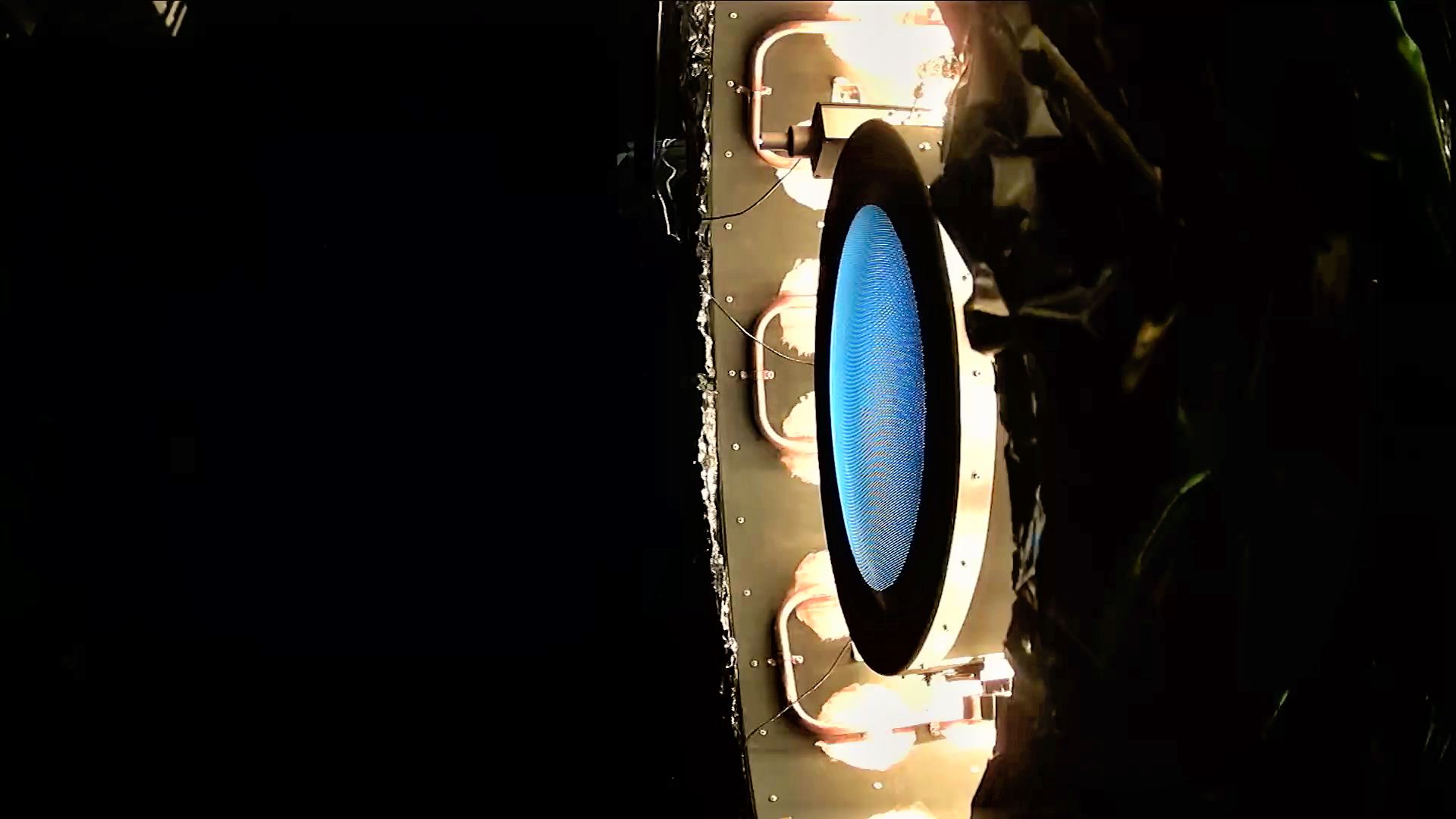NASA's mission DART will test our ability to redirect an asteroid by quite literally crashing into it — but the spacecraft will also test a new type of propulsion system for the agency.
NASA's Evolutionary Xenon Thruster-Commercial (NEXT-C) is an ion drive. Rather than igniting hydrogen-based propellant as most rockets do, NEXT-C will use the electricity generated by the spacecraft's own solar panels to create an electrical field that accelerates charged xenon ions up to very high speeds in order to propel the craft. Ion drives can, in theory, reach much higher speeds than conventional rockets. NASA's Glenn Research Center in Cleveland, Ohio, and the company Aerojet Rocketdyne teamed up to build the NEXT-C system, and a mission called the Double Asteroid Redirection Test (DART) will be its testbed.
DART will launch from Vandenberg Space Force Base in California aboard a SpaceX Falcon 9 rocket on Wednesday (Nov. 24) at 1:58 a.m. EST (0658 GMT, or Nov. 23 at 10:58 p.m. local time). Next autumn, the spacecraft will crash into the smaller asteroid of a pair called Didymos, called Dimorphos, so that scientists can measure how dramatically such an impact might change an asteroid's orbit should a space rock ever threaten Earth. Launch coverage will begin at 12:30 a.m. EST (0530 GMT) here at Space.com and on NASA TV.
Related: If an asteroid really threatened the Earth, what would a planetary defense mission look like?

But before the mission's dramatic end, DART will use NEXT-C, testing the system in space for the first time. An ion drive was previously used on NASA's Deep Space 1 and Dawn spacecraft, which launched in 1998 and 2007, but NEXT-C will be three times as powerful, according to NASA.
"It is a little bittersweet to know that we are only going to be able to operate for a short amount of time before we impact the asteroid," Jeremy John, lead propulsion engineer for DART, and an engineer for Johns Hopkins University Advanced Physics Laboratory (JHUAPL), said in a video.
NEXT-C won't be the main force pushing DART along its journey; that duty will fall to the 12 conventional thrusters aboard the spacecraft that will be responsible for much of the spacecraft's movements, including in the final leg of its journey as it plunges into Dimorphos.
Get the Space.com Newsletter
Breaking space news, the latest updates on rocket launches, skywatching events and more!
But NEXT-C will light up several times along DART's journey. The intent of the maneuvers, according to NEXT-C's creators, is to take the ion drive for a test spin. Its engineers will turn the system on to show that the ion drive can run with just the power generated by the spacecraft's solar panels — and to show that it works in the harsh conditions of space.
"And we're going to just basically demonstrate that we can operate it, in space, because part of the wonders of new technology is just that step from when you built it up to getting it to space and getting it to operate for the first time," Elena Adams, an engineer at JHUAPL and DART's deputy project manager, said during a news conference held Nov. 4. "So that's what we're demonstrating for NASA."
Follow us on Twitter @Spacedotcom and on Facebook.
Join our Space Forums to keep talking space on the latest missions, night sky and more! And if you have a news tip, correction or comment, let us know at: community@space.com.

Rahul Rao is a graduate of New York University's SHERP and a freelance science writer, regularly covering physics, space, and infrastructure. His work has appeared in Gizmodo, Popular Science, Inverse, IEEE Spectrum, and Continuum. He enjoys riding trains for fun, and he has seen every surviving episode of Doctor Who. He holds a masters degree in science writing from New York University's Science, Health and Environmental Reporting Program (SHERP) and earned a bachelors degree from Vanderbilt University, where he studied English and physics.









